Extremely Beautiful !!

Is beauty only skin deep? Momma always said, ‘It’s what inside that counts’. Insert cliche about ‘seeing things for what they are’ here. Read as deeply as you want. At the very least, artist Nick Veasey takes stunning X-ray photographs of the mundane, the gigantic, and naturally, of nature. Below you will find a small collection of his work with information on the man with X-ray vision littered throughout. Lead jackets are on your left


IT ALL STARTED…
“My girlfriend’s father used to be a lorry driver,” explains Nick with a mischievous smile. “At one time he drove a lorry for a couple of days which contained thousands of cans of Pepsi, one of which had a ring-pull prize worth £100,000.
“I thought I’d try a scam. I decided to hire an x-ray machine from a local hospital to find the winning can. I never did find it, but it sparked off the ideas for the career I have today.”
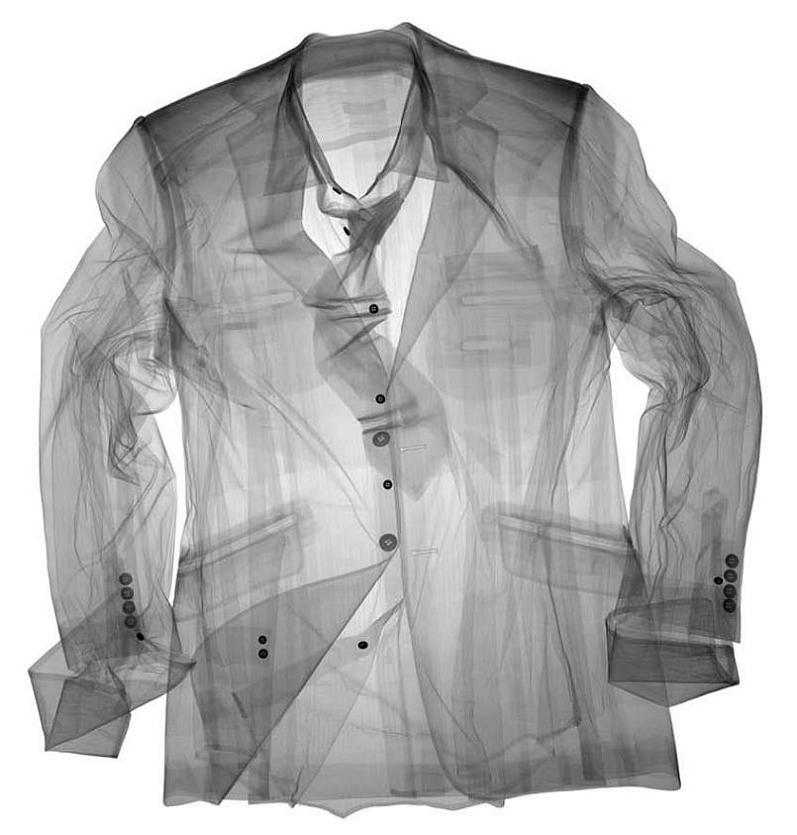

“Most of the images that bombard us all are aspirational. I want to be sexy, cool, thin, younger… My work is real. X-Ray is an honest process. It shows things for what they are, what they are made of. I love that. It balances all that glossy, superficial bollocks. I’m real and straightforward. And so is my work.
I’m not that interested in using x-ray to shock, as too much art tries too hard to bludgeon a message home. Shock and gore is easy with x-ray. I like to create intrigue and beauty.”

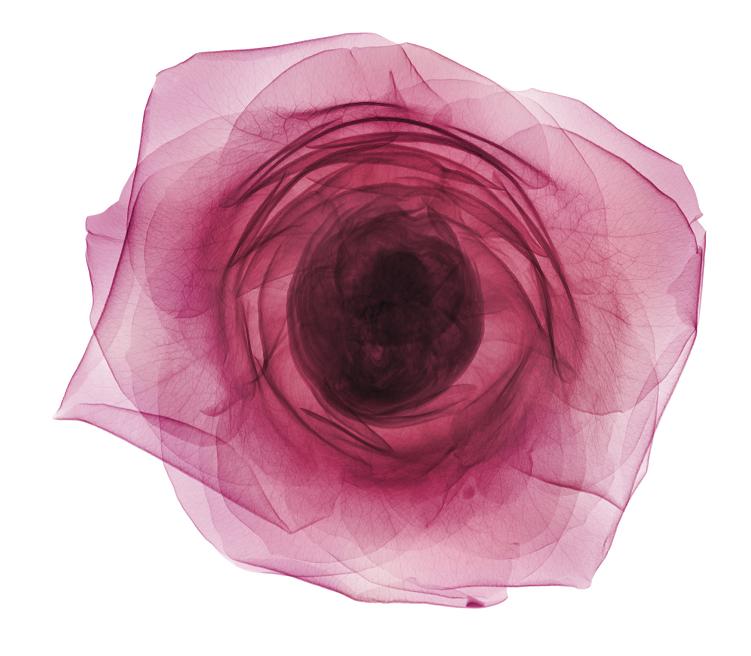
Do you have much control over the results of the X-rays?
What you control is the amount of radiation; the thicker the object, the more radiation you need. You also control the time for which you expose the radiation and the distance that the radiation source is from the object. In photography terms time is like how long the shutter is open, the amount of radiation is how much light there is coming through it, and the distance is the same as how far the lens is from the object you are shooting. However, it doesn’t work on the normal visual spectrum of light. X-rays are invisible.
- Altpick Interview
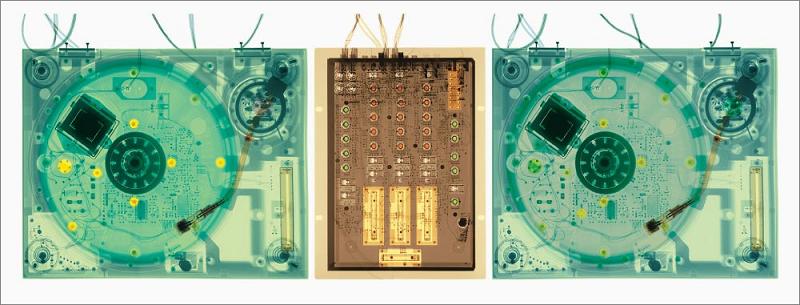
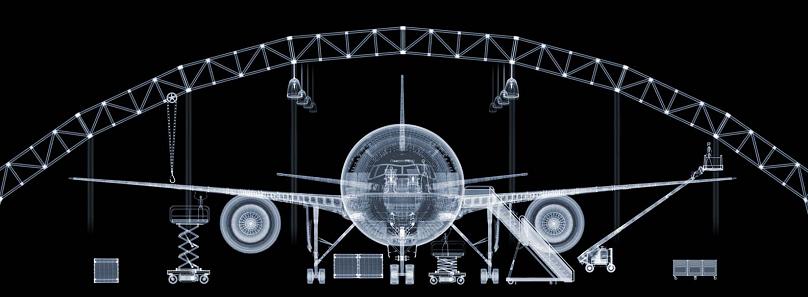
The image above is the largest x-ray photograph ever taken. It’s a Boeing 777 and required over 500 separate x-rays of individual elements to achieve.


Veasey borrowed a cargo x-ray scanner normally used to search trucks crossing into the US from Mexico to create this image. Once he scanned the vehicle, Veasey used Photoshop to populate it with skeletons and objects he shot separately (yes, he x-rayed a fedora). A hospital in White Plains, New York, commissioned the piece to celebrate the opening of its new orthopedic facility. The medical center’s PR team had a promotional bus wrapped in the image drive around White Plains for nearly two months.
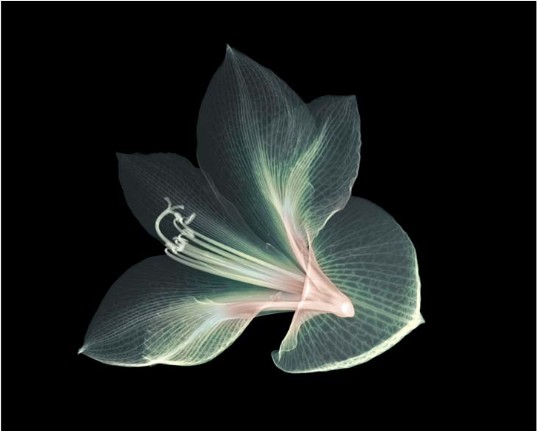
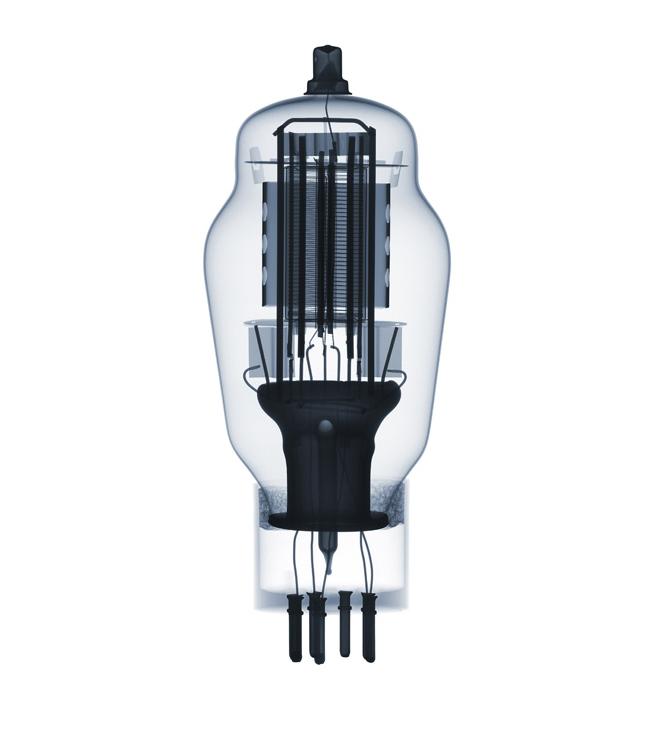
The 47-year-old Englishman estimates that over the past decade or so he’s x-rayed more than 4,000 objects. “I’m interested in how things work, and x-rays show what’s happening under the surface,” he says. “Plus, they look cool.” To get his pictures, Veasey uses industrial x-ray machines typically employed in art restoration (to examine oil paintings), electronics manufacturing (to inspect circuit boards), and the military (to check tanks for stress fractures).
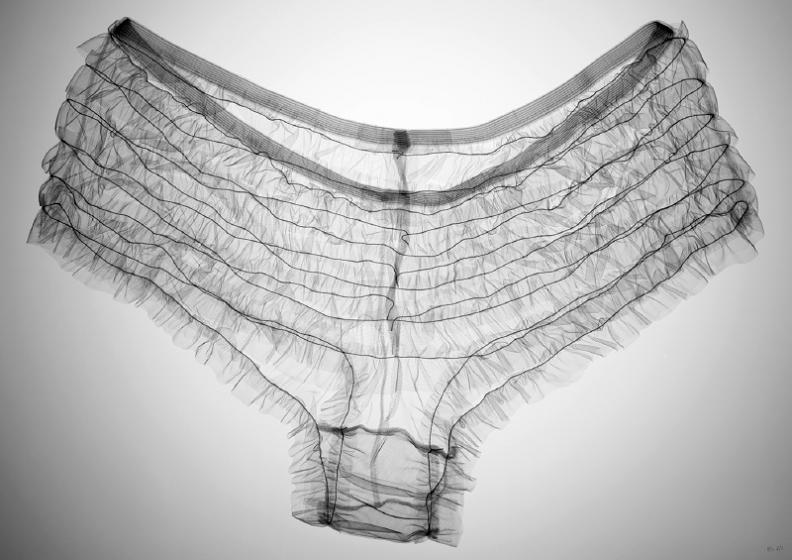

Working with high doses of radiation isn’t always easy. To minimize a patient’s radiation exposure, medical x-ray techs grab their blurry stills in a fraction of a second; Veasey needs to bombard his subjects with ionizing radiation for as long as 12 minutes to get crisp shots.
So to capture human forms, Veasey works with either skeletons in rubber suits (normally used to train radiologists) or cadavers that have been donated to science. When a corpse becomes available, he has at most eight hours to pose and shoot before rigor mortis sets in.

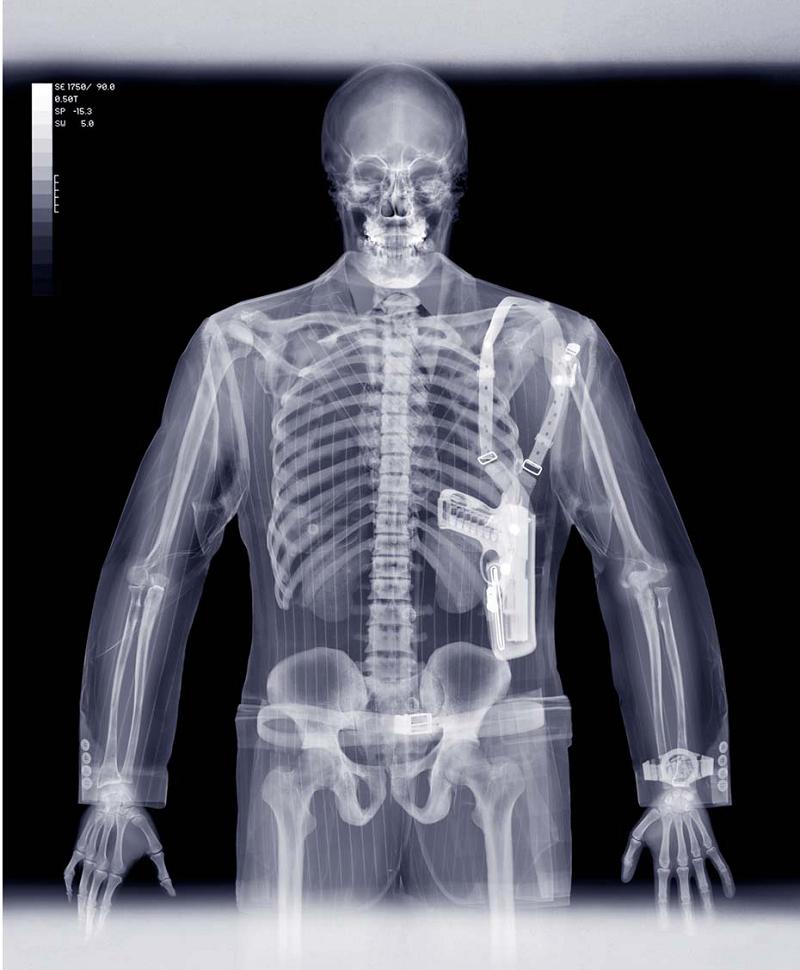
When working with the everyday stuff that surrounds us my basic thought is to try to make us think of all that goes into a subjects design. Why does it have that form? How does it work? What is it made of? Everything is designed, either by man or by nature. I like to reveal that design, make us appreciate or wonder at what goes on inside.
My main motivation in using the human figure in x-ray is to challenge society’s obsession with the image. Why is it so important to look a certain way? Inside we all function the same way and I think it is not a person’s face or ‘look’ that makes them what they are.


Are there any sky-is-the-limit, money-no-object subjects you dream of tackling?
Are you kidding? Of course. Please God let me loose in The Museum of Natural History. Or give me Access to All Areas at NASA.
- via CoolHunting
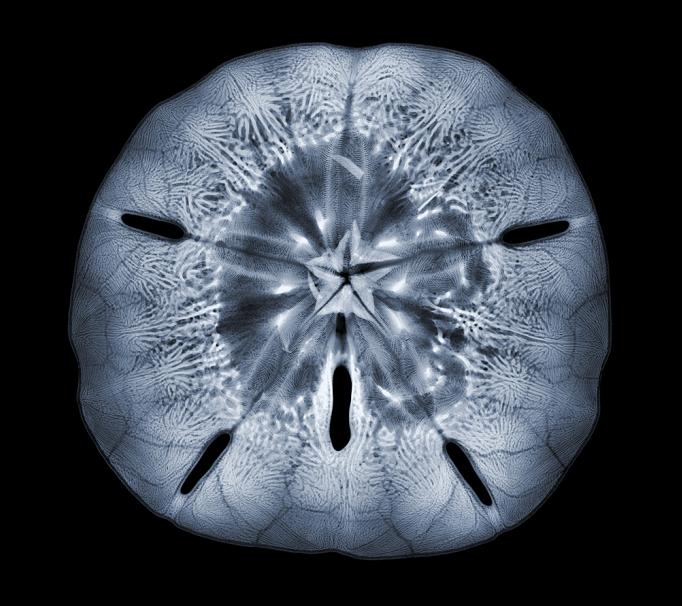

Whose work do you admire?
There is an English artist called Bridget Riley who is a psychedelic painter from the 60′s and 70′s. She creates optical effects through geometric patterns. It has really made a lasting impression on me because you do a double take.
I hope these x-rays will do this by showing what’s on the inside. It takes another slat on superficiality, which is what I really like. It opens it all up to see what’s on the inside, to see whether you like it or not, and it doesn’t matter that it’s Prada or Wal-Mart.
- via Altpick interview

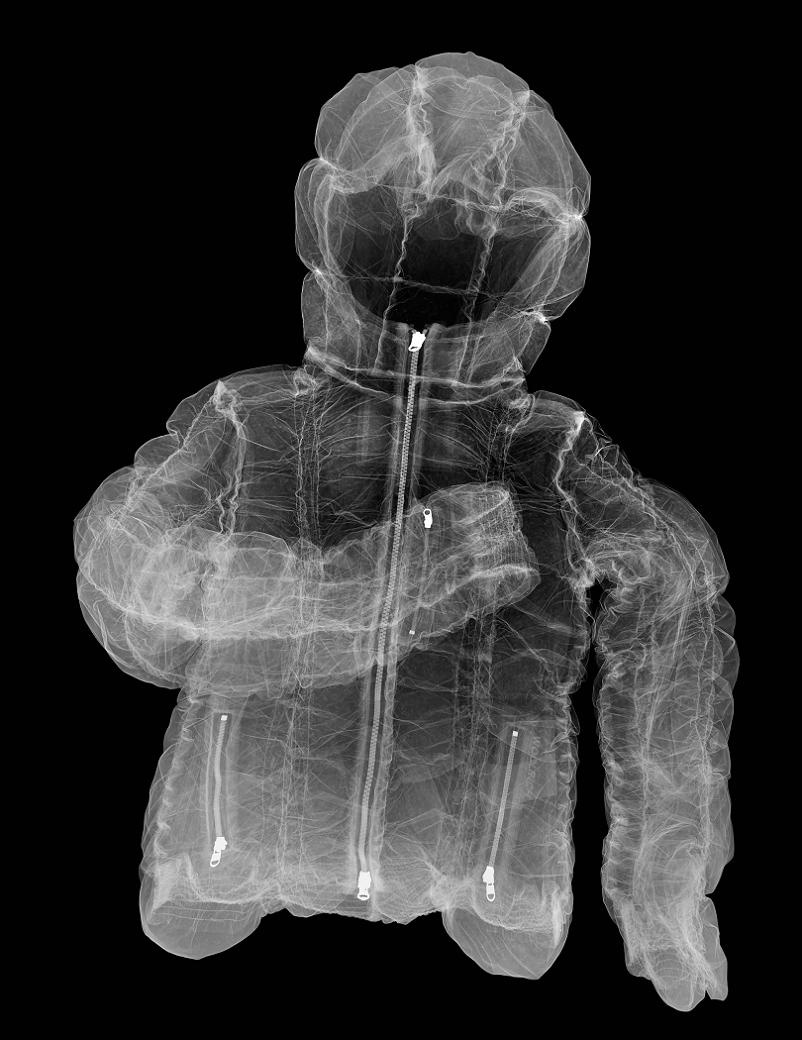
How do you see your work evolving?
How I see it evolving is mixing it with regular photography. That would make it even more intriguing, where part of the shot is X-ray and part is real.

SOURCES
- Please visit NICKVEASEY.COM for additional information and photographs. Nick has several books of his work for sale on his site
- Wired Article
- AltPick Interview
- Cool Hunting Interview
- Young Gallery Exhibit
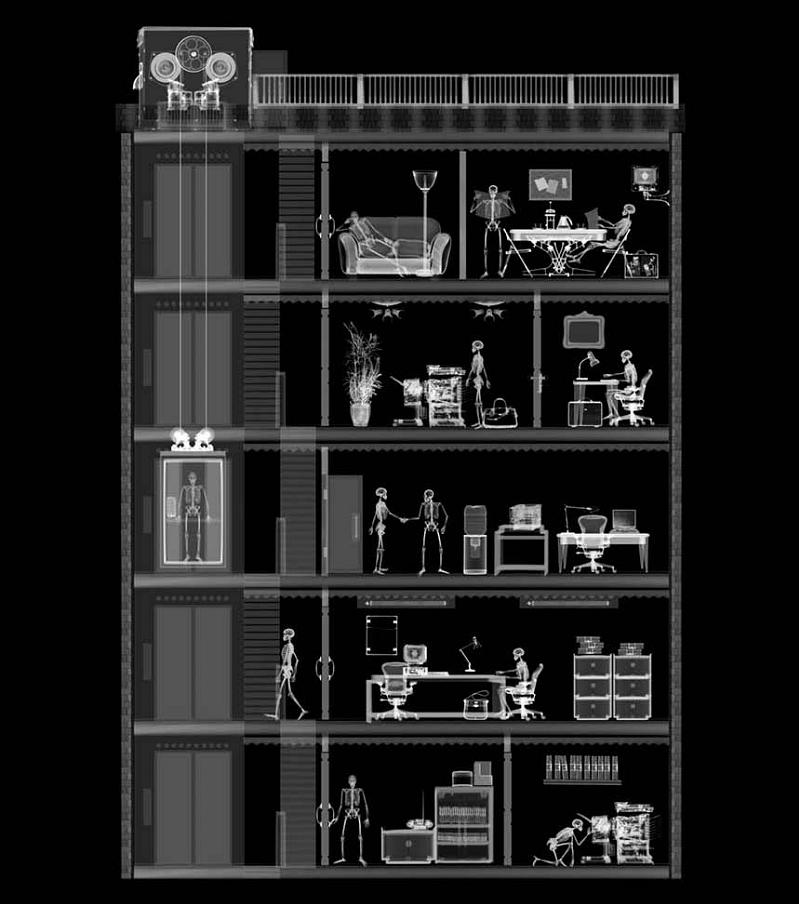








 2:29 PM
2:29 PM
 FunFactWorldz
FunFactWorldz

































